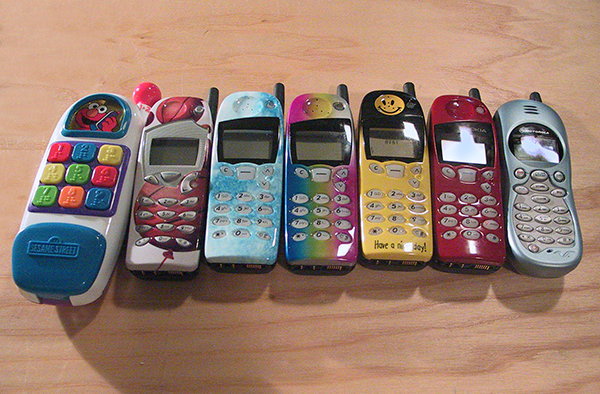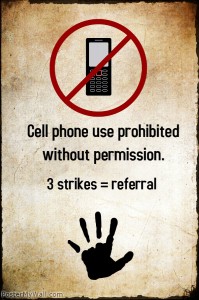Last year, I decided to run a social experiment with my honors class. This was a small class of 18 students taking Advanced Placement Biology, with a mix of juniors and seniors. The experiment was to see if these digital natives could handle having an open policy on cell phones. I allowed them to use their phones in class, I allowed them to take photos during labs and use phone calculators. The only time I insisted that phones be put away was during the exams.
What I found from this year long experiment might surprise you.

In my head, I envisioned students using the devices to look up information, participate in class discussions, and take online quizzes.
This happened some of the time. For instance, when students would ask a question that I didn’t know the answer to, I’d ask one of them to google it and report to the class.
Unfortunately, as the year progressed, I noticed that the cell phones were having a negative effect on classroom attention and engagement. Students would spend most of the hour on social networks or texting friends, and my bearded dragon became a celebrity as students snapped pictures of him doing funny lizard things.
The one scene that made me finally realize that this policy wasn’t working happened toward the end of the year. Class started with a discussion about an article they were required to read. Our discussion evolved into questioning the role of the government in requiring their citizens to get vaccines.
It was a good discussion, until I noticed about four students looking at the phones and giggling and basically not paying attention to anything. I asked nicely (these students knew I had a relaxed policy about phones) for them to put their phones away and join the class. One girl responded, “why, we’re not doing anything right now, we’re just talking.”
She did put her phone away, these are good kids, and I think my shocked and dumbfounded look must have shocked her also. She really didn’t think that a discussion in the class was actual learning. The whole experiment has made me rethink my technology policy and even how I set my expectations for my class next year.
First of all, I am going to be very clear with the AP class that discussions are part of the learning process. I think 12 years of schooling has given them the impression that learning happens when a teacher is in front of the class lecturing. This model is slowly changing, and especially in college students need to understand that learning isn’t passive. To this end, I’m going back to adding a participation grade. It won’t be worth a large part of their grade, but it will be a reminder that speaking up, speaking to their peers, and sharing are part of the learning process.
Secondly, incoming students will be disappointed to find that I’m going back to a no cell phone in class rule. It saddens me to do this, but I’ve found I really can’t compete with the social networks. The distraction is too great. Students think they can multitask, but more and more studies show that multitasking usually results in doing a lot of things badly. This showed in their class engagement, it showed in their test scores, and it even showed in their confusion when it came to basic instructions and due dates. They simply weren’t paying attention.
Since I do have activities that do require technology, such as asynchronous discussions, I don’t want to completely lock out cell phone use, but leave that door open in certain circumstances. I also didn’t want to have to send students to the office for glancing at a text message, so to that end, I’m employing a three-strikes rule. If I see the phone out, I’ll make a note of it. On the third time this happens (keeping track the entire semester), the student will receive an office referral. Generally, this earns them an after school detention. I suppose this is another experiment, one that will see if I can have a no phone policy unless I say it’s okay. I’ll have to report on that at the end of the year!
Here’s my zombie themed poster to remind my students that I mean business!


